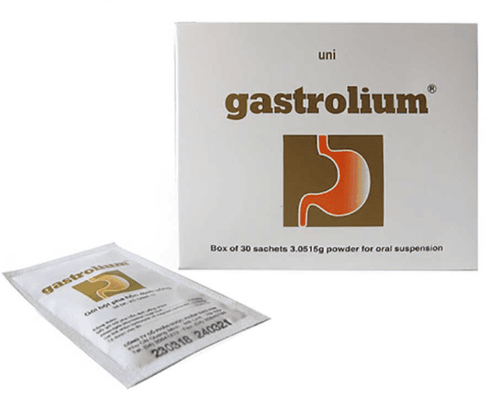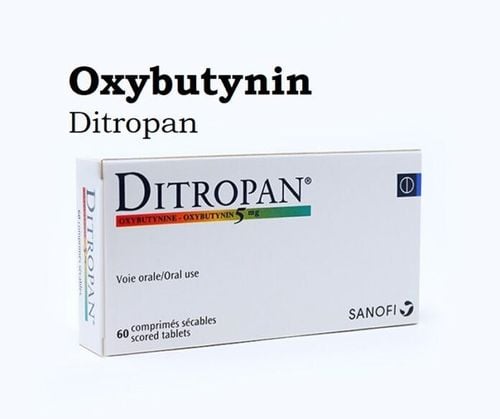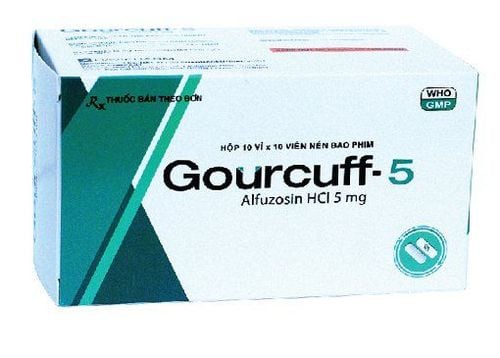This is an automatically translated article.
The article is professionally consulted by Doctor of Department of Examination & Internal Medicine, Vinmec Nha Trang International General Hospital.
Diagnosis of acute adrenal insufficiency is often difficult due to nonspecific clinical symptoms. It is one of the leading causes of death and is often missed with a diagnosis of unexplained cardiovascular collapse.
1. Symptoms of acute adrenal insufficiency
Digestive disorders: epigastric pain (above the navel), then spreads to the whole abdomen, but on examination the abdomen is still soft, sometimes accompanied by nausea and vomiting. The above manifestations can be confused with another surgical abdominal pathology. Psychiatric disorders: fatigue to coma or vice versa: agitation, delirium, confusion. Cardiovascular collapse, rapid drop in blood pressure, cold hands and feet, small, fast pulse. Signs of extracellular dehydration include weight loss, muscle pain, and sometimes fever, even though there are no signs of infection. In addition, it can be combined with widespread pain such as: muscle pain, joint pain, headache.

Rối loạn tiêu hóa là biểu hiện thường thấy của suy tuyến thượng thận cấp
2. Diagnostic test for acute adrenal insufficiency
Biological tests help confirm the diagnosis.
Blood electrolyte disorders: sodium decreased (80%), chlorine decreased, potassium increased (60%). Blood protein increased, HCT increased. Hypoglycemia (sometimes very low causing neuropsychiatric symptoms). Eosinophilia, hypercalcemia (6%), acidosis, anemia. In case of secondary adrenal insufficiency, the common manifestations are:
Hypoglycemia (50%). Hyponatremia (15%). Eosinophilia (20%). Anemia.
3. Causes of acute adrenal insufficiency
Acute adrenal insufficiency can occur against the background of primary (adrenal failure) or secondary (influence of another agent).
3.1. Causes of adrenal gland 3.1.1. Adrenal gland damage Infection, surgery. Taking laxatives, diarrhea or diuretics. Profuse sweating, prolonged binge eating, vomiting Abandon hormone replacement therapy. 3.1.2. Bilateral adrenal haemorrhage Bilateral adrenal haemorrhage and hemangioma are rare, but progressive, lesions that are often detected at autopsy. Non-traumatic adrenal haemorrhage is usually caused by a coagulopathy. May be due to disseminated intravascular coagulation or coagulation diseases (cancer, blood diseases) but most commonly due to anticoagulant treatment. Bilateral adrenal haemorrhage may also occur with anti-adrenal therapy In children with Waterhouse-Friderichsen syndrome, perinatal bilateral adrenal hemorrhage causing acute adrenal insufficiency is usually due to successive vascular collapse due to blood loss. . 3.1.3. Congenital dysfunction of adrenal hormone synthesis Very rare and seen only in pediatrics. It is a disease of salt loss in infants with 21 - hydroxylase inhibition. The disease appears after a few days to a few weeks, accompanied by symptoms of anorexia, no weight gain, vomiting, dehydration and cardiovascular collapse. Children will die when acute adrenal insufficiency is not treated properly and promptly. Children urinate a lot of sodium even though blood sodium decreases, accompanied by decreased blood chloride and increased blood potassium. In girls, there is often an abnormality of the external genitalia.
3.1.4. Other causes Drug-induced:
Corticosteroid use, corticosteroid-containing products (eg, herbal medicine, traditional medicine, used for long-term pain relief) are common causes Aminoglutethimide is an anti-adrenal blocking agent. Cortisol synthesis with the risk of adrenal insufficiency from the first days of treatment. Some cases of acute adrenal insufficiency caused by continuous treatment with high doses of Ketoconazole. Rifampicin is a liver enzyme inducer that increases the oxidation of cortisol to 6-β hydroxycortisol. Some other enzyme inducers such as Gardenal, Dihydan (phenytoin). Other rarer causes include cholesterol embolism, thrombosis of an adrenal artery or vein, and fungal infection (cryptococcosis).
Total adrenalectomy, requiring hormone replacement therapy.
3.2. Hypothalamic - pituitary causes Surgery for anterior pituitary adenoma. Sheehan's syndrome. Injury. Meningitis . Aneurysm rupture of an internal carotid artery. Hemorrhage of the pituitary gland (hemorrhage of the pituitary gland). Test Metyrapone, especially at the end of the test. Surgery to remove an adrenal gland due to a tumor.

Chấn thương cũng có thể là nguyên nhân gây suy tuyến thượng thận cấp
4. Treatment of acute adrenal insufficiency
Infusion to keep the line, start with physiological saline.
Inject Hydrocortisone hemisuccinate 100mg IM, 100mg IV. Then transfer the patient to a specialist, treatment in three main directions: adjustment of water, electrolytes, hormone replacement and regular monitoring.
4.1. Rehydration, electrolytes Every 4-6 hours, infuse 1 liter of isotonic saline. Average 4 liters/24 hours. If cardiovascular collapse: infusion of high-molecular-weight solutions or whole blood with central venous pressure control.
4.2. Hormone replacement Hydrocortisone hemisuccinate IM or IV, 100mg every 4-6 hours for IM. Severe cases: 100mg every hour or can use Dexamethazone. The next days gradually reduce the dose of Hydrocortisone hemisuccinate, injection in small doses and at intervals. After 4-6 days of treatment, Hydrocortisone will be switched to oral and then back to a maintenance dose of about 30mg/day. Continuous infusion of Hydrocortisone hemisuccinate: Some suggestions for continuous intravenous infusion, initially 25mg intravenous, then 50-100mg/day continuous infusion. Mineralocorticoid treatment is not required. The clinical effect is usually quick, allowing 24-48 hours to be converted to oral administration. Progression is usually good with prompt and correct treatment. Desoxycorticosterone acetate (Syncortyl) 10mg, starts working 2 hours after intramuscular injection, lasts 24 hours. Specifically, Syncortyl 5mg is repeated after 24 hours for moderate impairment. In severe cases, in addition to providing 4 liters of fluid/24 hours, give Syncortyl intramuscularly every 12 hours, sometimes 10mg/12 hours. 4.3. Treatment of accompanying diseases such as: pneumonia, respiratory inflammation, diarrhea, fever,... Improve physical condition, supplement essential vitamins. Supplement drugs to support and protect liver cells. 4.4. Monitor for the first 24 hours: Avoid moving the patient a lot. Monitor every hour: dehydration, pulse, temperature, urine output, consciousness. Do tests every 4-6 hours: blood and urine electrolytes, blood glucose, blood creatinine, whole blood protein, blood chart. Depending on the situation, you can do more: blood culture, chest X-ray - abdomen at bed, electrocardiogram several times. Simultaneously find and treat the trigger (antibiotics...).
Please dial HOTLINE for more information or register for an appointment HERE. Download MyVinmec app to make appointments faster and to manage your bookings easily.













